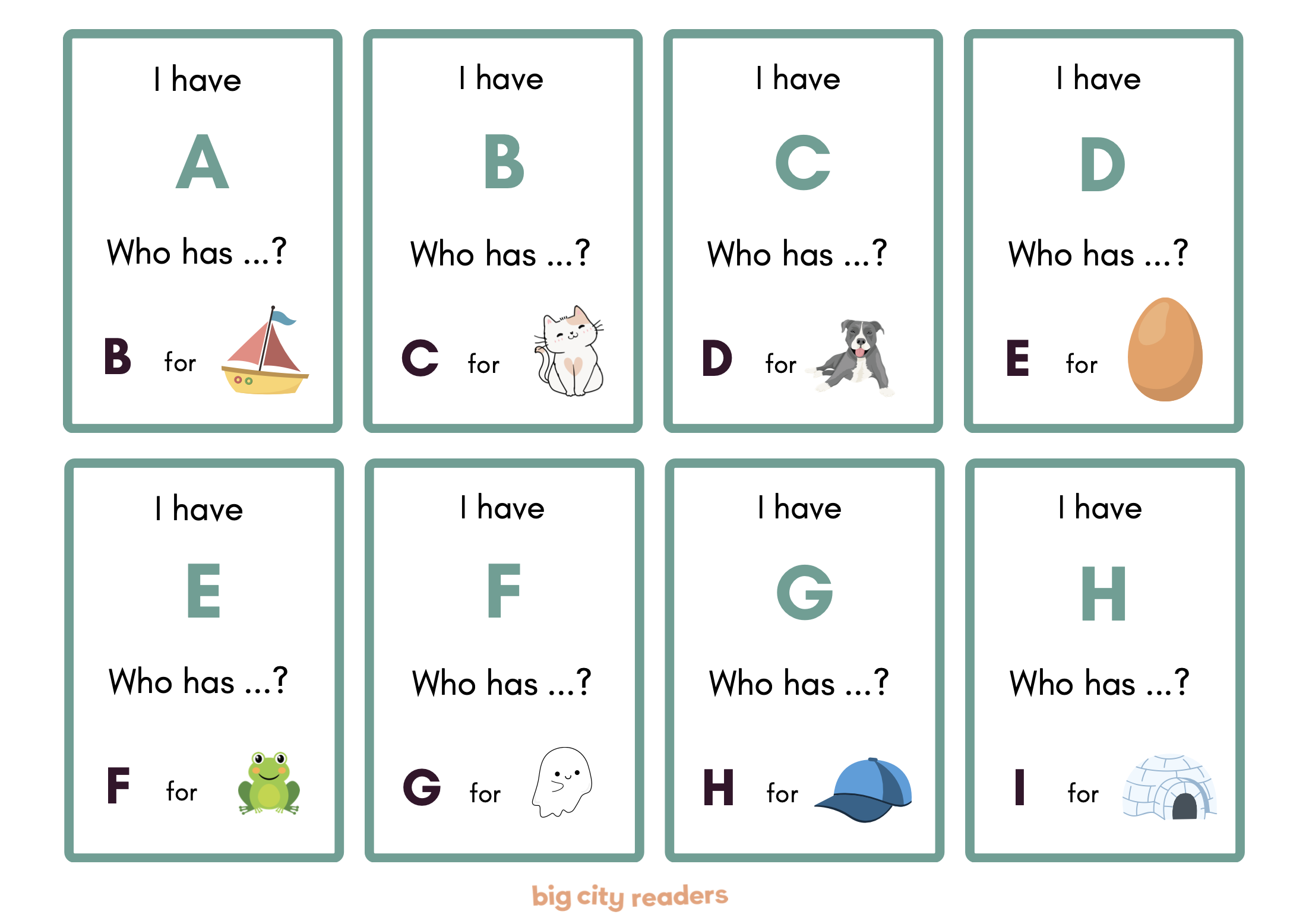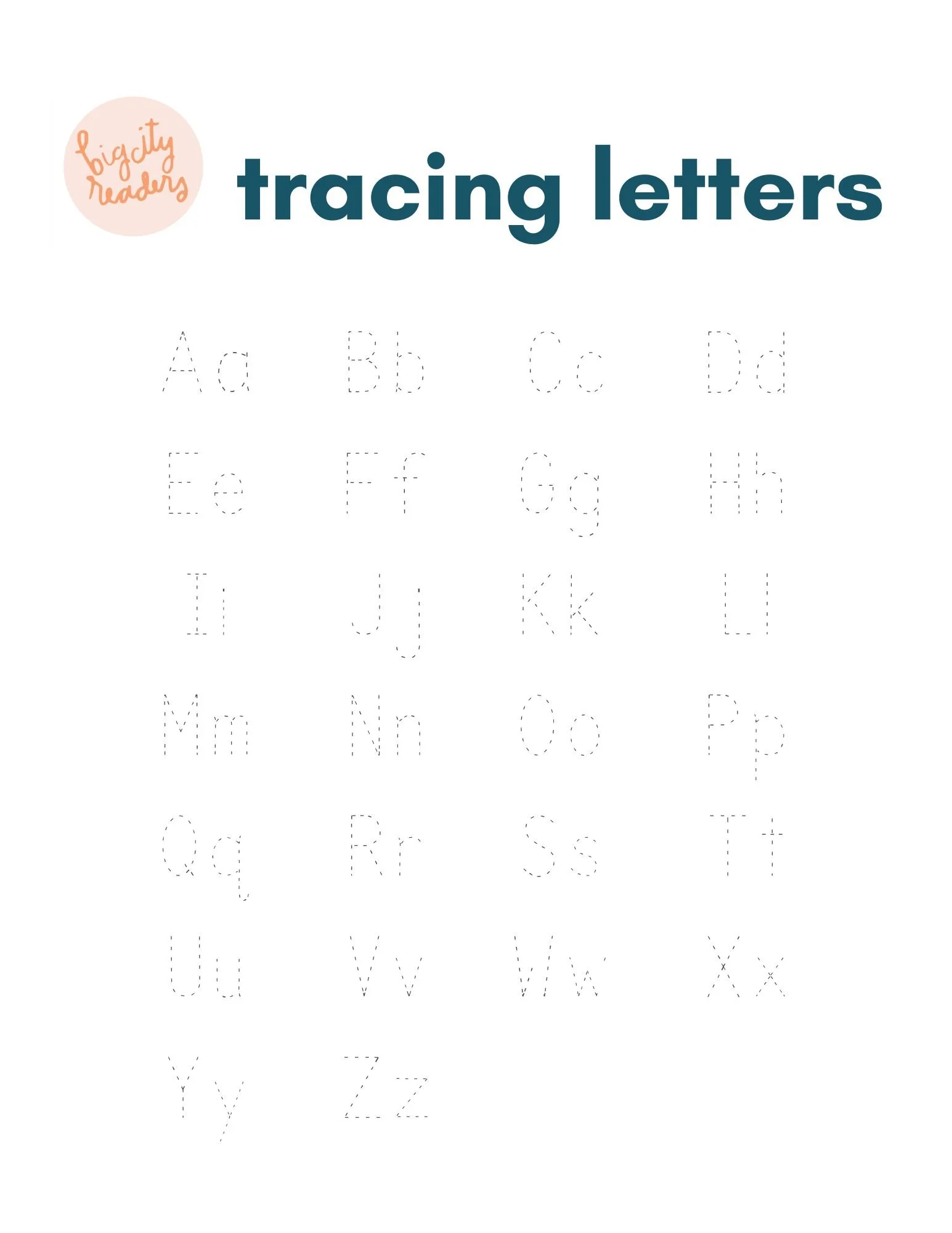Should I Teach My Child Letters or Sounds First?
Which comes first: teaching letters or sounds? For something so fundamental to reading, it's easy to feel unsure as a parent.
When it comes to teaching kids to read, we adults sometimes forget how complex it is. Reading comes naturally to us now, but for children, it’s a whole new skill. So, if you’re asking yourself, “Should I start by teaching my child letters or sounds?” you’re definitely not alone!
The truth is, that both letters and sounds are important, and your child will eventually need to learn both. What really matters is that your approach is phonics-based, which connects letters to sounds in a way that helps children understand and decode words. This connection builds confidence and makes learning to read a more natural, step-by-step journey.
Are you new here? Welcome! I’m Miss Beth, the founder of Big City Readers - a different kind of early childhood development. Children need flexibility and fun to dig in and grow as readers. I believe not all children learn from sitting at a desk– most don’t! My job as an educator is to find the best solution for every child. I use the 5 building blocks of early literacy: read, write, sing, talk, and play in addition to the Orton Gillingham method which is a science of reading-backed approach that utilizes the three brain pathways through which children learn—visual, auditory, and kinesthetic.
Let’s talk about the differences between letters and sounds and explore some ways to make this early learning process enjoyable and effective for your child.
Letters vs. Sounds: What’s the Difference?
First, let’s clarify what we mean by “letters” and “sounds.” Letters are the symbols you see on a page—A, B, C, etc. Sounds are the noises we hear in spoken language. For example, the letter “C” can represent the /k/ sound in “cat” or the /s/ sound in “city.” Each letter (or combination of letters) can make specific sounds.
The goal of reading is to recognize these letters and understand the sounds they represent so that they can be combined into words. Phonics, the system that connects letters to sounds, is the foundation of reading. When kids know that the letter “M” makes the /m/ sound, they’re starting to make sense of the language around them.
If you want to develop a strong foundation in teaching your child the early basics of the reading process, I HIGHLY recommend checking out my course: The Raising Readers Workshop! As a parent, you have all the tools you need to raise a fantastic reader, so let’s work on streamlining the process together.
Sounds Are The Perfect Place To Start…Here’s Why:
Sounds are the foundation of spoken language, and reading is simply translating those sounds into written symbols. Teaching sounds first helps children grasp the building blocks of language – phonemes – before moving on to the abstract concept of letters. This sound-first approach is especially effective because:
Children Hear Sounds Before They Recognize Letters: Babies start distinguishing sounds long before they’re ready to look at a page of text. Building on this natural skill makes reading feel more intuitive.
Confidence Comes From Understanding Sounds: When children can blend and break apart sounds, they start recognizing words in spoken language. For instance, they can hear /c/, /a/, and /t/ and blend them into “cat”—a major confidence boost!
Sound Awareness Leads to Better Decoding Skills: When kids understand that words are made up of sounds, they’re better equipped to decode unfamiliar words when they begin reading.
Here are some of my favorite activities to introduce sounds:
Sound Games: Play “I Spy” with beginning sounds. For instance, say, “I spy something that starts with the /s/ sound.” This can help kids recognize and isolate sounds in a playful way.
Clapping Out Sounds: Try clapping for each sound in simple words like “dog” or “bat.” This helps them hear and separate the sounds that make up a word, giving them a head start on blending sounds into words.
Sound Sorting: Gather objects around the house and group them by beginning sounds. For example, put “banana” and “ball” in one group and “cup” and “carrot” in another.
But Don’t Focus On Just The ABC Song!
Many parents naturally want to start with the ABC song, and it’s more than okay to sing it—this song is a great way to introduce children to the alphabet. However, to build your child’s literacy skills as fully as possible, pair it with activities that focus on sounds and rhyming patterns, not just strictly letters.
Songs like “Twinkle, Twinkle, Little Star” or “Old MacDonald Had a Farm” do more than entertain—they help children recognize patterns, rhythms, and sounds in language, making them surprisingly effective teaching tools!
Here’s a fun game to try: Sing a song your child knows well, like my previous example of “Twinkle, Twinkle, Little Star”, but hum one word instead of singing it. Ask your child to identify the missing word. This builds both auditory skills and sound awareness in a fun, interactive way.
If you’re curious to learn more about how to turn playtime, storytime, and everyday activities into learning moments (like the one above and so many more!) I HIGHLY recommend registering for my Toddler Literacy Lab! Together, we will work through 26 bite-sized classes that focus on promoting fun and learning at the same time. Plus, we explore all things ABC’s and so much more!
Adding Letters Into The Mix
Once your child is comfortable recognizing and playing with sounds, you can begin introducing letters as visual symbols that represent those sounds. The goal is to help them see the connection between what they hear and what they see.
Here are great activities to introduce letters after sounds:
Alphabet Puzzles: These help kids get familiar with the shape and look of each letter while developing fine motor skills.
Letter Hunt Games: Go on a letter hunt at home or outside. Ask your child to find objects that start with a specific letter sound, like “B” for “book” or “T” for “tree.”
Alphabet Songs and Books: Sing the alphabet song together or read ABC books. These activities help kids associate letters with fun, memorable activities, making it easier to remember the letters.
No Matter Your Starting Point, Make Sure Learning Is Based On Phonics
Phonics is what ties both letters and sounds together. With phonics, kids learn that each letter (or combination of letters) corresponds to a specific sound. This understanding allows them to start blending sounds into words, a huge milestone in reading.
Phonics builds reading confidence because it’s structured and predictable. Once children know the relationship between letters and sounds, they can sound out unfamiliar words. This is why a phonics-based approach is so effective—it gives children the tools to decode words independently.
To learn more about phonics and how to teach it correctly to your child, check out my post: Phonological Awareness vs Phonics: What Is The Difference?
The ABCs Are The Foundation Of All Letters, Sounds, And Words!
Regardless of whether you begin teaching specific letters or sounds, the ABCs are the foundation for all learning development!
If you’re looking to help support your child’s alphabet development even further, my workbook – The Complete Guide To The ABCs – is the perfect addition to your family’s routine. Together, we will use letter activities, games, and activities to learn how to teach vowel sounds, syllables, blends, digraphs, and more!
If you want it to feel FUN and EASY to teach your child to read because YOU are equipped with the knowledge, this is the perfect resource for you.
So…Should I Start Teaching With Letters or Sounds?
Start with sounds! Focusing on sounds first taps into your child’s natural ability to hear and process language, setting them up for success when they begin recognizing and decoding letters. As they grow more confident with sounds, you can introduce letters to deepen their understanding.
Most importantly, create a supportive and fun learning environment where your child feels encouraged to explore. Reading is a journey, and every small step builds toward a lifelong love of learning.
Do you have any further questions on how to support your child through the reading process? Let me know in the comments! And to keep up with all the latest childhood education information, check out my recent posts:







